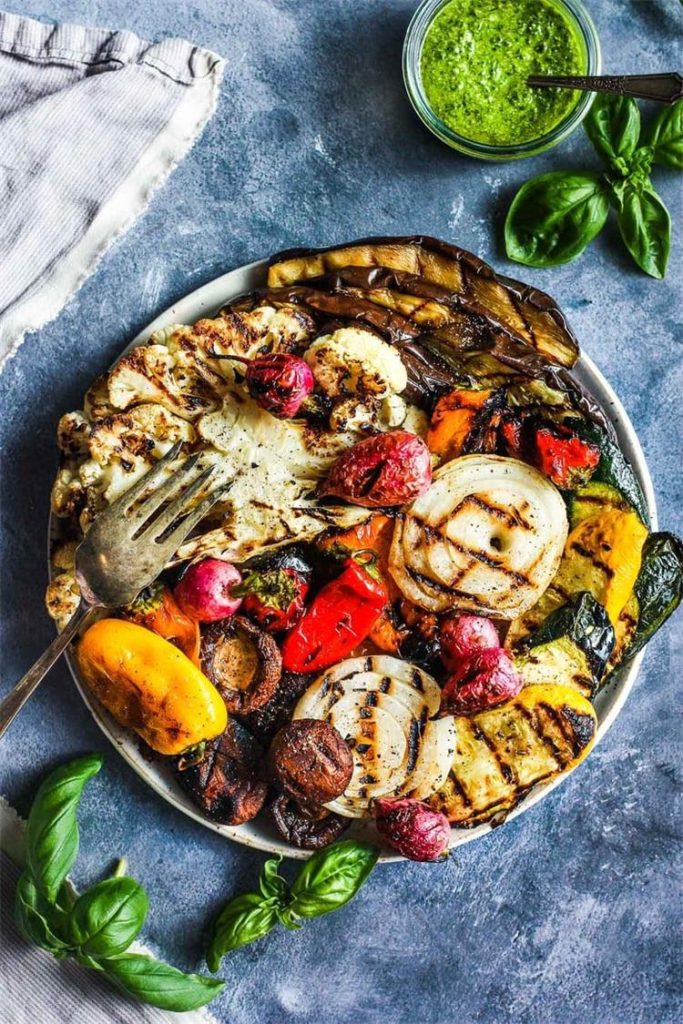
Grilling veggies is a great way to enjoy the fresh produce of the season and add some smoky flavor to your meals. Grilled veggies are also versatile, as you can serve them as a side dish, a salad, a sandwich filling, or even a pizza topping. Plus, grilling veggies is easy and fun, once you know the basics. Here are some tips and tricks to help you grill veggies like a pro.
Choose the Right Veggies
Not all veggies are suitable for grilling, as some may burn, dry out, or fall apart on the grill. The best veggies for grilling are those that are firm, sturdy, and can withstand high heat. Some examples are:
- Zucchini
- Eggplant
- Bell peppers
- Mushrooms
- Onions
- Corn
- Asparagus
- Broccoli
- Cauliflower
- Potatoes
- Carrots
- Beets
You can also grill leafy greens like kale, spinach, or lettuce, but you need to be careful not to overcook them or let them fly away.
Cut and Season the Veggies
Before grilling, you need to cut and season the veggies to enhance their flavor and texture. Here are some guidelines:
- Cut the veggies into uniform pieces that are not too thick or thin. This will ensure even cooking and prevent charring or drying out.
- Season the veggies with salt, pepper, herbs, spices, oil, vinegar, or marinade of your choice. You can also use store-bought sauces or dressings for convenience.
- Let the veggies marinate for at least 15 minutes or up to overnight in the fridge. This will help them absorb more flavor and moisture.
- Shake off any excess marinade or oil before grilling to avoid flare-ups or sticking.
Use the Right Tools
To grill veggies successfully, you need to use the right tools and accessories. Here are some essentials:
- A grill: You can use a gas, charcoal, or electric grill, depending on your preference and availability. Make sure the grill is clean and preheated before adding the veggies.
- A grilling basket or tray: This is a metal container with holes or slits that allows the heat and smoke to reach the veggies without letting them fall through the grates. You can also use skewers or foil packets for smaller or softer veggies.
- A grill brush: This is a long-handled brush with stiff bristles that helps you clean the grill grates before and after grilling. You can also use a damp paper towel or cloth to wipe off any residue.
- A spatula or tongs: These are handy tools that help you flip and move the veggies on the grill without piercing or tearing them.
Grill the Veggies
Now that you have everything ready, it’s time to grill the veggies. Here are some steps:
- Arrange the veggies in a single layer on the grilling basket, tray, skewers, or foil packets. Leave some space between them for air circulation and even cooking.
- Place the veggies on the grill over medium-high heat. Close the lid if possible to trap the heat and smoke.
- Grill the veggies for about 10 to 15 minutes, turning occasionally, until they are tender and charred in spots. The exact cooking time will vary depending on the type and size of the veggies.
- Transfer the grilled veggies to a platter or bowl and drizzle with some more oil, vinegar, sauce, or dressing if desired. Enjoy them hot, warm, or at room temperature.
Serve and Store the Grilled Veggies
Grilled veggies are delicious on their own or paired with other foods. Here are some ideas on how to serve and store them:
- Serve grilled veggies as a side dish with grilled meat, fish, tofu, or tempeh.
- Serve grilled veggies as a salad by tossing them with some greens, cheese, nuts, seeds, or dried fruits.
- Serve grilled veggies as a sandwich filling by layering them with some bread, cheese, hummus, pesto, or mayo.
- Serve grilled veggies as a pizza topping by spreading them over some pizza dough, sauce, cheese, and herbs.
- Store grilled veggies in an airtight container in the fridge for up to 3 days or in the freezer for up to 3 months. Reheat them in the oven, microwave, or skillet before serving.
Grilling veggies is a simple and satisfying way to enjoy seasonal produce and add some variety to your meals. Try it out today and see how easy and fun it is!




